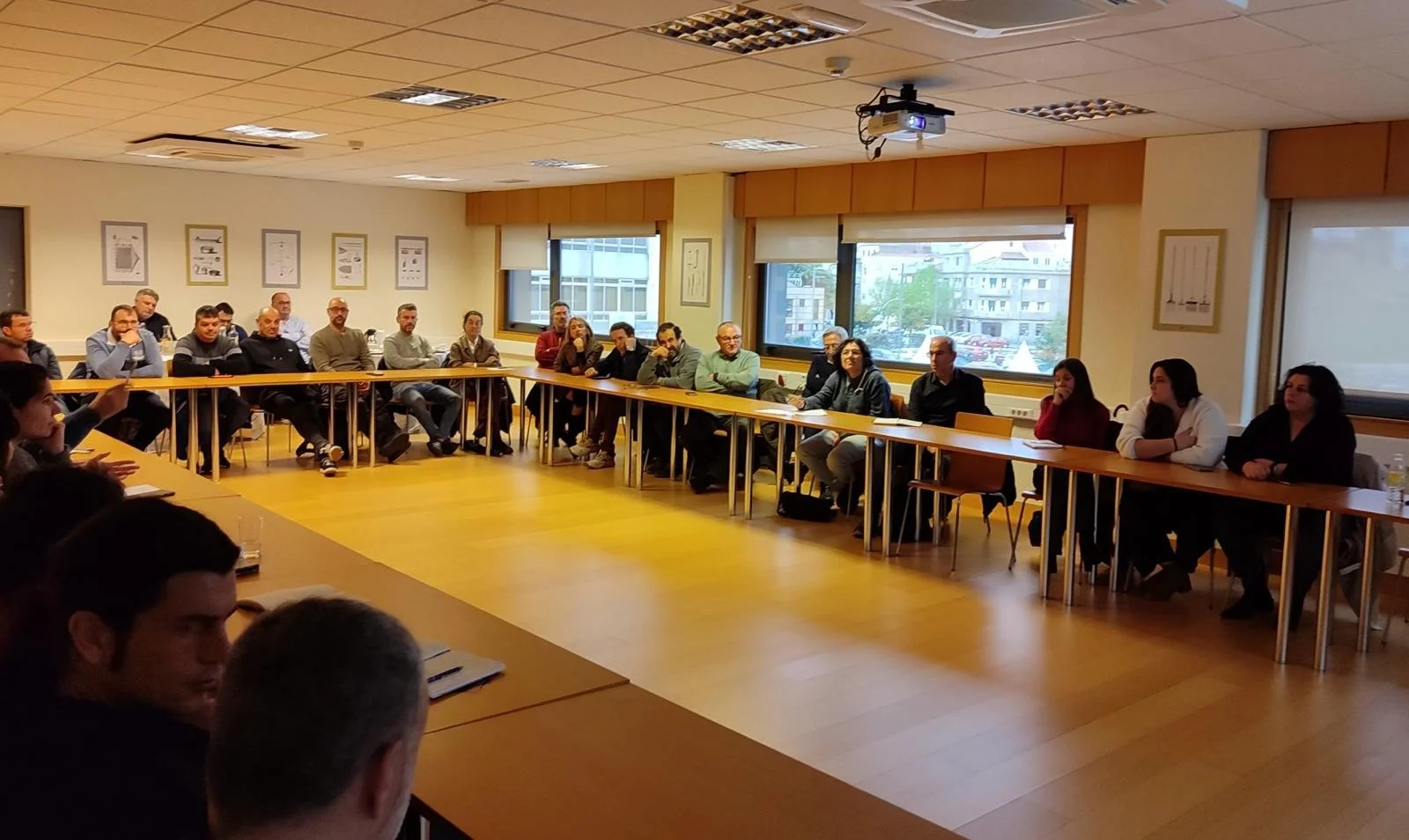On the 2nd April 2024, PRIMUS partners Anton Salgado (IIM CSIC) and Aser Mata (PML) organized a satellite products end-users meeting at the Sea Technological Center (CETMAR) in Vigo (Spain), to present part of the work done in WP5 (Earth System Science Case 2 led by Anton Salgado), and stimulate knowledge transference between end-users from mussel farming and academia.
The meeting gathered 35 participants including mussel farmers, technology transfer professionals and marine scientists from a number of affiliations including IIM-CSIC, PML, University of Vigo, Consello Regulador do Mexillón de Galicia, CETMAR, EMPROMAR DIGITALSEA, Organización de productores de Mejillón de Galicia (OPMEGA), Angulas Aguinaga, Federación de Mejilloneros FeMex, PROINSA S.A., Instituto Tecnolóxico para o Control do Medio Mariño (INTECMAR) and INXENIA innovation consultancy.
The 35 participants, including mussel farmers, technology transfer professionals and marine scientists, who attended the PRIMUS satellite products end-users at CETMAR, in Vigo (Spain).
Anton Salgado gave a brief introduction of PRIMUS, then Aser presented the main satellite products developed in PRIMUS with a talk titled “Estimating chlorophyl and net primary production from space with Sentinel”; and Anton further elaborated from this to explain the application of these products as a tool to better monitor and manage mussel farms in the region, with a talk titled “Estimating the clearance rate of mussels cultured in Galicia from space with Sentinel”.
Aser from PML (left) and Anton from IIM CSIC (right) presenting their PRIMUS-related work at the satellite products end-users meeting at CETMAR.
This meeting was part of PRIMUS WP6 (Transferring Science into Solutions for Society) aimed at conducting demonstrations that transfer science into developing societal solutions, building on three of the PRIMUS science case studies (concerning EBUS and aquaculture, fisheries and eutrophication monitoring), and working together with scientific, agency, policy and commercial early adopters.

